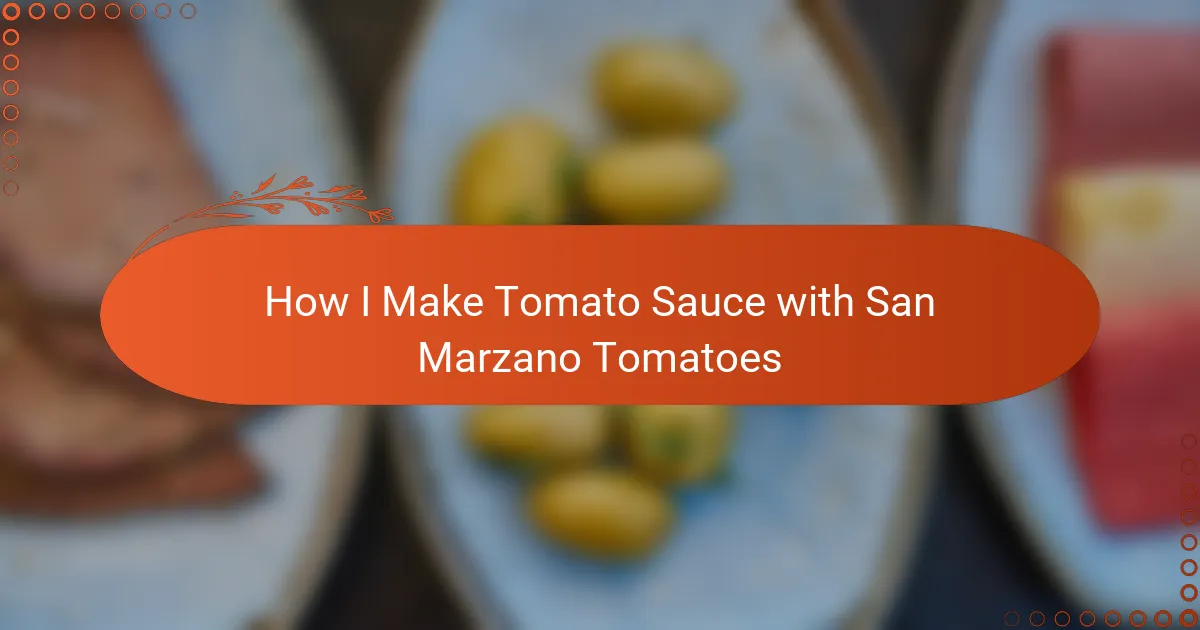Key takeaways
- Quality tomatoes, especially San Marzano, significantly enhance the flavor of homemade tomato sauce due to their natural sweetness and low acidity.
- Layering flavors through patience and slow cooking is essential for developing depth in tomato sauce.
- Simple ingredients like fresh garlic, olive oil, and basil play crucial roles in creating a comforting and flavorful sauce.
- Storing homemade sauce in glass jars and freezing in portions helps maintain its freshness and makes it easy to use in various recipes.
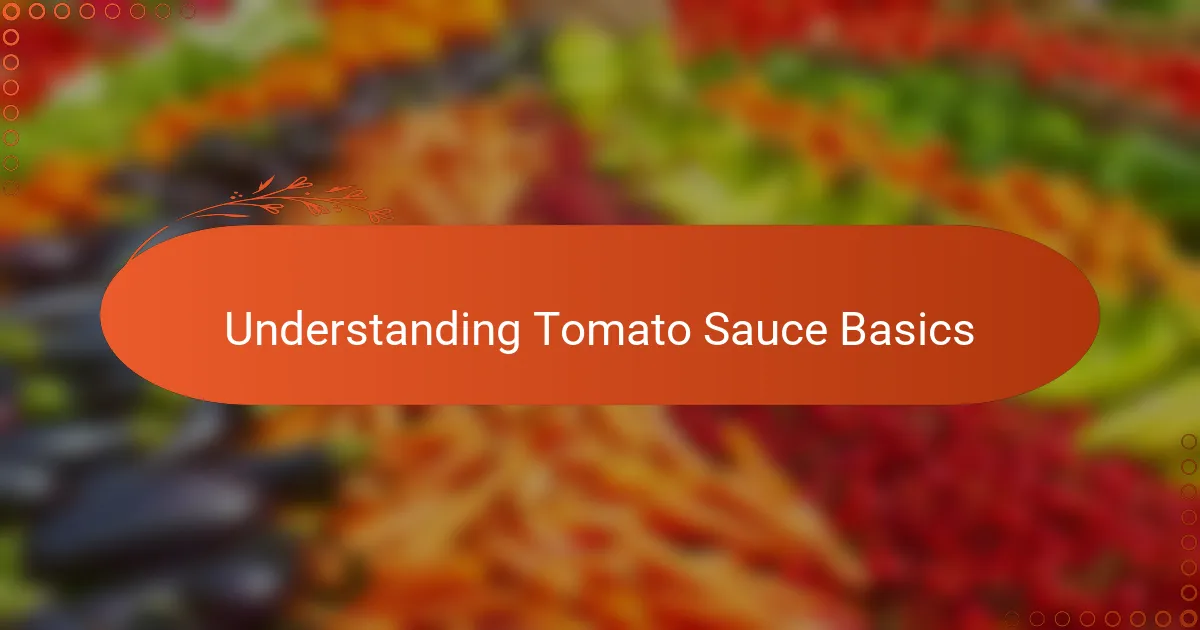
Understanding Tomato Sauce Basics
Tomato sauce, at its heart, is simple yet incredibly versatile. From my experience, understanding its foundation means appreciating the natural sweetness and acidity tomatoes bring to the table. Have you ever stopped to think about what really makes a homemade sauce stand out from store-bought versions?
When I first started cooking, I underestimated how much the quality of tomatoes influences the final taste. San Marzano tomatoes, for example, have a unique balance of sweetness and low acidity that transforms a basic sauce into something extraordinary. It’s amazing how such a small detail can completely elevate the flavor.
I also learned that tomato sauce is more than just tomatoes; it’s about patience and layering flavors. Cooking slowly allows the sauce to develop depth and richness that can’t be rushed. Have you noticed how a good simmer can turn simple ingredients into comfort food that feels like a warm hug?
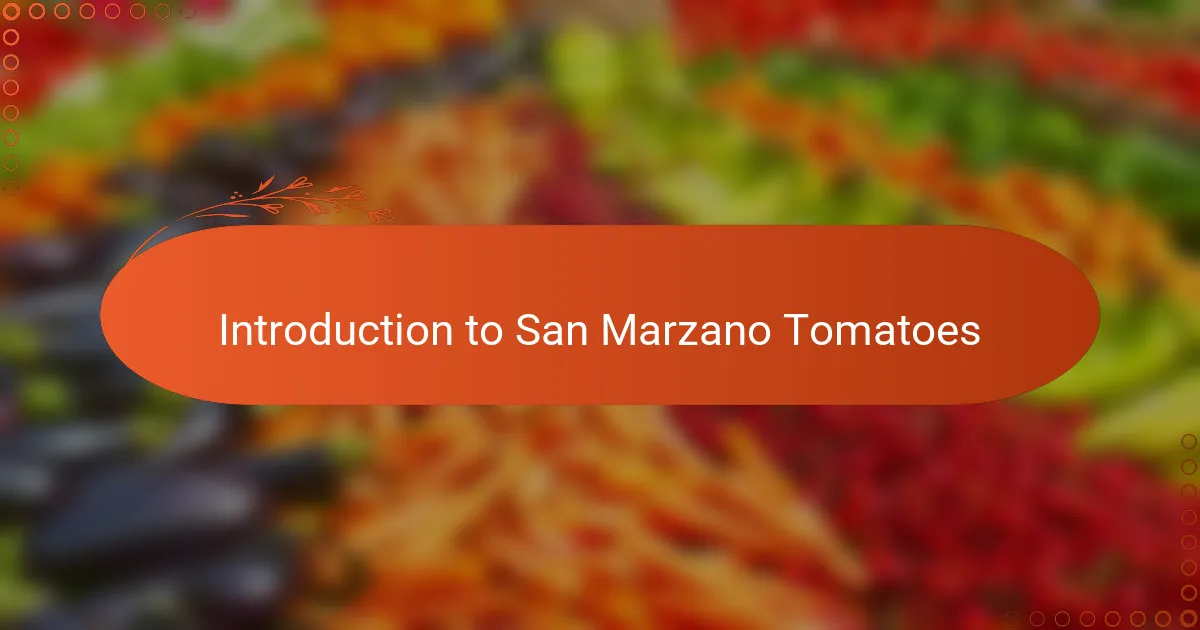
Introduction to San Marzano Tomatoes
San Marzano tomatoes have a story that goes beyond the kitchen—they’re grown in the volcanic soil near Mount Vesuvius in Italy, which gives them a unique flavor profile I’ve rarely found elsewhere. When I first tried cooking with them, I was surprised by their natural sweetness and subtle acidity, which instantly reminded me why some sauces taste so much fresher.
What really caught my attention was their thick flesh and low seed count. It makes the sauce wonderfully smooth without needing much effort to strain, saving time and preserving that authentic homemade texture I love. Have you ever reached for a can only to find watery sauce? San Marzanos cut through that problem beautifully.
Using these tomatoes feels like honoring a tradition every time I cook. They bring a depth and brightness that spark creativity in the kitchen, encouraging me to keep experimenting with simple ingredients. Isn’t it incredible how one ingredient can change the entire cooking experience?

Essential Ingredients for Tomato Sauce
In my kitchen, the essential ingredients for tomato sauce are surprisingly few, but each one plays a crucial role. Of course, besides the star San Marzano tomatoes, I always include fresh garlic and good-quality olive oil—they lend a fragrant base and smooth richness that feels like the sauce’s warm backbone. Have you ever tried skipping garlic? The sauce just doesn’t have that comforting depth I crave.
Salt is another small but mighty ingredient I rely on. It’s not just about seasoning; salt enhances the natural sweetness of the tomatoes and balances the acidity in a way that feels almost magical to me. Finding the right pinch sometimes feels like an art form, but once nailed, it brings everything together in perfect harmony.
Last but definitely not least is fresh basil. Adding it towards the end of cooking introduces a bright, herbal note that lifts the sauce and makes it sing. I remember the first time I tossed in basil—it transformed the sauce from simple to sensational. Have you noticed how a hint of fresh herb can make all the difference? That’s the kind of nuance I love bringing to my tomato sauces.
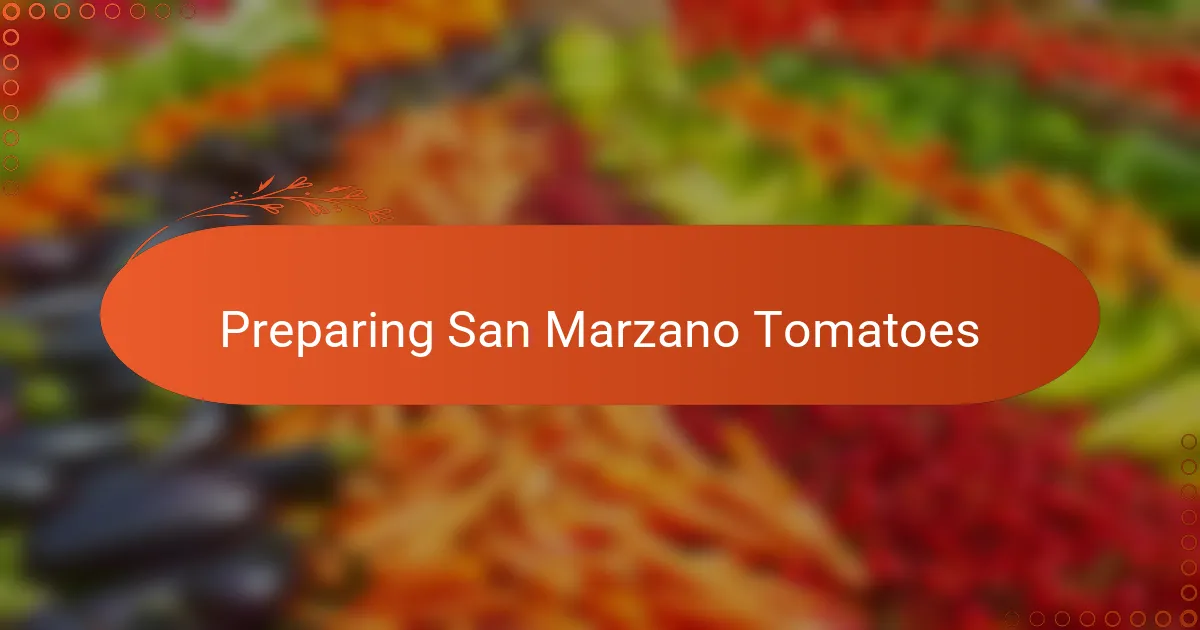
Preparing San Marzano Tomatoes
Handling San Marzano tomatoes feels almost like a ritual for me. I start by gently rinsing the entire can of tomatoes under cool water, mainly to wash away any canning residue. It’s a simple step, but it sets the tone for how much I respect the ingredient before even touching the sauce pot.
Peeling the skins off these tomatoes is something I never skip. I score a small “X” on each tomato and drop them briefly into boiling water—that moment when the skins loosen feels like a mini victory. Have you ever noticed how much smoother your sauce becomes once those skins are removed? It’s like removing a barrier to pure tomato flavor.
Sometimes, I break up the tomatoes by hand before cooking, rather than relying on a blender. There’s something satisfying about feeling the texture between my fingers and knowing the sauce will have that rustic, homemade charm. Don’t you think that little bit of effort makes the sauce taste more personal and authentic?
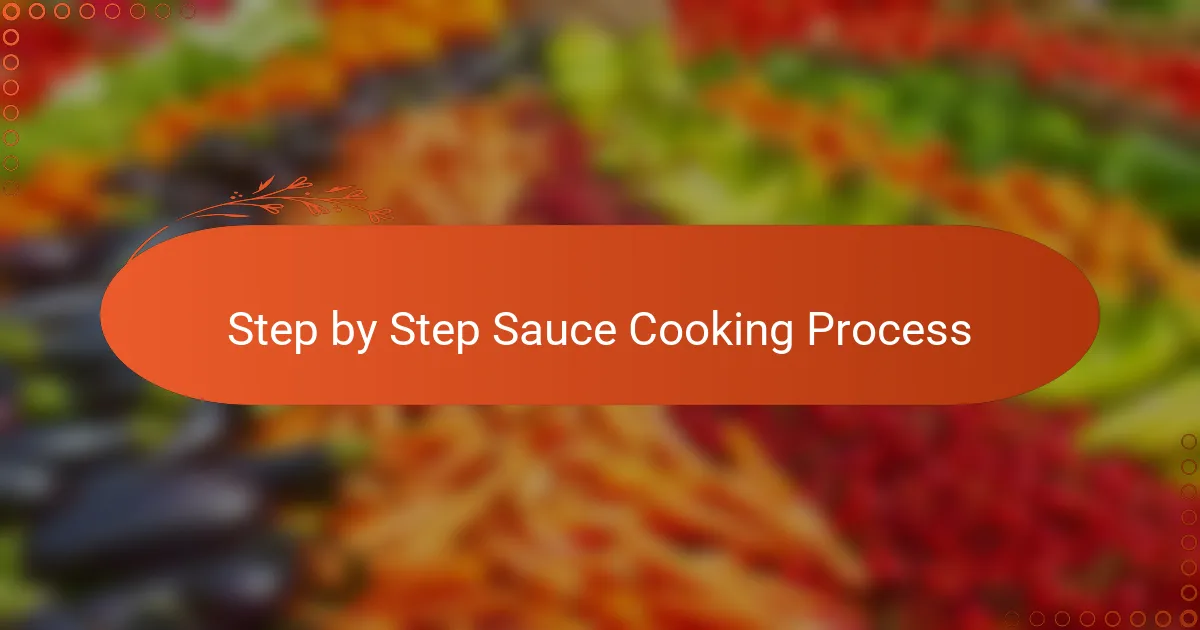
Step by Step Sauce Cooking Process
Once the San Marzano tomatoes are prepped, I gently heat some olive oil in a heavy-bottomed pan over medium heat. I toss in finely chopped garlic and let it sizzle just until fragrant, careful not to let it brown—because that subtle aroma is like the first note of a beautiful melody in the sauce. Have you ever noticed how the smell of garlic cooking signals something comforting is on its way? That little moment always feels like the start of something good.
Next, I add the peeled tomatoes, breaking them down gently with my spoon. As they bubble softly, I season with a pinch of salt and let the sauce simmer slowly, stirring occasionally. The patience here is key—I find that letting the sauce cook low and slow helps all those natural flavors marry beautifully. Do you think the magic happens in the simmer? For me, it absolutely does.
Finally, just before turning off the heat, I throw in fresh basil leaves to brighten everything up. That burst of herbal freshness feels like the final brushstroke on a canvas. It’s these little touches—the gentle simmer, the fresh basil—that transform basic ingredients into a sauce that feels like it’s been crafted with care. Isn’t it incredible how such simple steps build so much depth and warmth?

Tips for Enhancing Flavor
One trick I swear by is adding a small pinch of sugar while the sauce simmers. At first, it feels counterintuitive—why add sweetness to already sweet tomatoes? But from my experience, that touch of sugar balances out acidity beautifully, making the flavors round and harmonious without overpowering the natural tomato taste. Have you tried this before? It can be a subtle game changer.
I also love to add a splash of good-quality balsamic vinegar toward the end of cooking. To me, it introduces a gentle depth and a hint of complexity that you wouldn’t expect from a simple tomato sauce. It’s like giving your sauce a secret ingredient that softly whispers richness, making every bite more memorable.
Finally, don’t underestimate the power of timing when adding herbs. Tossing fresh basil in just before you finish cooking preserves its bright, fresh aroma and gives the sauce that lively pop I crave. Overcooking herbs can dull their fragrance, so I’ve found patience here really pays off. Have you noticed how fresh basil can turn a good sauce into something exceptional? I certainly have.

Storing and Using Homemade Sauce
Storing homemade sauce has always felt like preserving a little bit of magic for me. After letting the sauce cool to room temperature, I transfer it into clean, airtight containers—glass jars are my favorite because they don’t absorb flavors and are easy to sterilize. Have you ever noticed how sealing that jar feels like bottling up a burst of summer sunshine?
When it comes to keeping the sauce fresh, I trust my freezer as a trusty ally. Dividing the sauce into smaller portions before freezing means I can thaw just what I need without waste. From experience, the flavor holds up beautifully, almost like it’s been simmering right in my kitchen, ready to bring warmth to a midweek meal.
Using homemade sauce is one of my favorite ways to add comfort to quick recipes. Whether it’s stirred into freshly cooked pasta or spooned over roasted vegetables, I find it instantly lifts even the simplest dishes. Have you ever had a meal transformed by a spoonful of good sauce? For me, it’s the little things like this that make homesteading cooking so rewarding.
